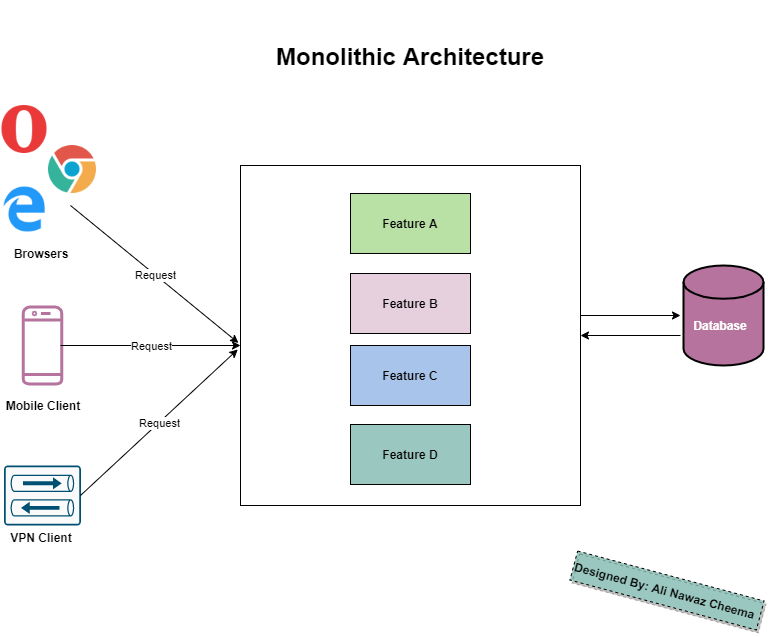What is monolithic architecture?
Developing a new application is all about risk, and selecting the right architecture is an important step toward success. There are multiple options to consider such as monolithic, service-oriented, and Microservices architecture, this article helps you to understand monolithic architecture.
Monolithic architecture
Monolith is an ancient word that refers to a huge single block of stone. In software engineering, a monolithic architecture refers to a single unit. The different components of a monolithic application are combined into a single-tier software application. Usually, a monolithic application consists of a database, server-side, and client-side application. All the application’s parts are unified and all its functions are managed in one place. Let’s look at the structure of the monolithic application in detail.

Components of monolithic applications are interconnected and tightly coupled, which helps the software to be self-contained. All features and components are developed in a single code base. This is a traditional solution for developing software applications, but some developers find it outdated. However, we found that a monolithic architecture is an ideal solution in some circumstances.
In order to find out whether this solution is good for your business, let’s have a look at its pros and cons.
Pros of a monolithic architecture
Simpler development and deployment
All features are developed in a single codebase, which makes it easier for deployment. With a monolithic architecture, developers don’t need to deploy changes or updates separately, as they can do it at once.
Cross-cutting concerns
Most applications require fewer cross-cutting concerns, such as logging, rate-limiting, authentication, authorization, etc. Monolithic applications incorporate these concerns much easier due to their single code base. It’s easier to hook up components to these concerns when everything runs in the same application.
Better performance
An app with a microservices architecture might need to make 50 API calls to 50 different microservices to load each screen, for example, which obviously results in slower performance. Monolithic applications allow fast communication between software components due to a single code base.
Cons of a monolithic architecture
Large Codebase
In course of time, more features are developed and their structure becomes blurred. The codebase gets cumbersome over time and becomes difficult to understand and modify.
Technology Constraint
If there’s a need to add some new technology to your applications, developers may face barriers to adoption. Adding new technology may require reconstructing the whole application, which is costly and time-consuming.
Limited Agility
Every change requires full redeployment of the whole application. Thus, all development teams have to wait until it’s done. Agility can be reduced greatly when several teams are working on the same project.
The bottom line
The monolithic architecture isn’t outdated, and it is still an ideal solution in some cases. Some giant companies still stay monolithic despite today’s popularity of microservices. Monolithic architecture can be beneficial if you are at the founding stage, you’re building an unproven product, and you have no experience with microservices. This solution is perfect for startups that need to get a product up and running as soon as possible. However, certain issues mentioned above come with the monolithic approach.